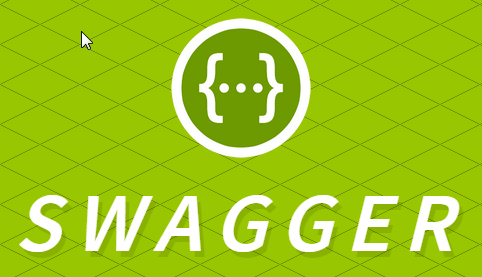Swagger integration for Cowboy (built on trails).
If you find any bugs or have a problem while using this library, please open an issue in this repo (or a pull request :)).
Simple, because there isn't a tool in Erlang to document Cowboy RESTful APIs easy and fast, and to improve development productivity.
With cowboy_swagger is possible to integrate Swagger to your Erlang projects that use Cowboy as a web server.
It is extremely easy to use, and with just a few steps you'll have a nice Web documentation for your RESTful APIs.
To learn a bit more about Swagger, please check this blog post.
This is the best part. It is extremely easy.
Because cowboy_swagger runs on top of trails, the first thing that you have to do
is document all about your handler within the trails metadata. Keep in mind that
all fields defined within each method into the metadata must be compliant with the
Swagger specification.
For example, suppose that you have example_echo_handler, so it must implement the
c:trails_handler:trails/0 callback:
trails() ->
Metadata =
#{get =>
#{tags => ["echo"],
description => "Gets echo var from the server",
produces => ["text/plain"]
},
put =>
#{tags => ["echo"],
description => "Sets echo var in the server",
produces => ["text/plain"],
parameters => [
#{name => <<"echo">>,
description => <<"Echo message">>,
in => <<"path">>,
required => false,
type => <<"string">>}
]
}
},
[trails:trail("/message/[:echo]", example_echo_handler, [], Metadata)].To get a better idea of how your handler should look like, please check example/src/example_echo_handler.erl.
First, you need to include cowboy_swagger_handler module in your list of trails to be compiled.
% Include cowboy_swagger_handler in the trails list
Trails = trails:trails([example_echo_handler,
example_description_handler,
cowboy_swagger_handler]),
% store them
trails:store(Trails),
% and then compile them
Dispatch = trails:single_host_compile(Trails),The snippet of code above is usually placed when you start cowboy. Check it here.
Then add cowboy_swagger to the list of apps to be loaded in your *.app.src file.
{application, example,
[
{description, "Cowboy Swagger Basic Example."},
{vsn, "0.1"},
{applications,
[kernel,
stdlib,
jsx,
cowboy,
trails,
cowboy_swagger
]},
{modules, []},
{mod, {example, []}},
{registered, []},
{start_phases, [{start_trails_http, []}]}
]
}.And that's it, you got it. Now start your application and then you will have access to the API docs
under the path /api-docs. Supposing that you're running the app on localhost:8080,
that will be http://localhost:8080/api-docs.
Additionally, cowboy_swagger can be configured/customized from a *.config file:
[
%% Other apps ...
%% cowboy_swagger config
{cowboy_swagger,
[
%% `static_files`: Static content directory. This is where Swagger-UI
%% is located. Default: `priv/swagger`.
%% Remember that Swagger-UI is embedded into `cowboy-swagger` project,
%% within `priv/swagger` folder. BUT you have to reference that path,
%% and depending on how you're using `cowboy-swagger` it will be different.
%% For example, assuming that you want to run your app which has
%% `cowboy-swagger` as dependency from the console, `static_files` will be:
{static_files, "./deps/cowboy_swagger/priv/swagger"},
%% `global_spec`: Global fields for Swagger specification.
%% If these fields are not set, `cowboy_swagger` will set default values.
{global_spec,
#{swagger => "2.0",
info => #{title => "Example API"},
basePath => "/api-docs"
}
}
]
}
].Definitions can be used for describing parameters, responses and security schemas.
For adding definitions to your app, you have 2 choices:
- Add a
definitionskey to your cowboy_swaggerglobal_specmap. - Add them by calling
cowboy_swagger:add_definition/2and send the definition's name and properties.
Let's say you want to describe a POST call to a newspapers endpoint that requires
name and description fields only, you can do it like this:
Option 1:
[ ... % other configurations
, { cowboy_swagger
, [ { global_spec
, #{ swagger => "2.0"
, info => #{title => "My app API"}
, definitions => #{
"RequestBody" =>
#{ "name" =>
#{ "type" => "string"
, "description" => "Newspaper name"
}
, "description" =>
#{ "type" => "string"
, "description" => "Newspaper description"
}
}
}
}
}
]
}
]Option 2:
For the second choice, you can do it for example in one or several start_phases,
directly in your handler or any other place you want.
-spec trails() -> trails:trails().
trails() ->
DefinitionName = <<"RequestBody">>,
DefinitionProperties =
#{ <<"name">> =>
#{ type => <<"string">>
, description => <<"Newspaper name">>
}
, <<"description">> =>
#{ type => <<"string">>
, description => <<"Newspaper description">>
}
},
% Add the definition
ok = cowboy_swagger:add_definition(DefinitionName, DefinitionProperties),
...Now in your handler's trails callback function you can use it:
...
RequestBody =
#{ name => <<"request body">>
, in => body
, description => <<"request body (as json)">>
, required => true
% Use the previously created `RequestBody' definition
, schema => cowboy_swagger:schema(<<"RequestBody">>)
},
Metadata =
#{ get =>
#{ tags => ["newspapers"]
, description => "Returns the list of newspapers"
, produces => ["application/json"]
}
, post =>
# { tags => ["newspapers"]
, description => "Creates a new newspaper"
, consumes => ["application/json"]
, produces => ["application/json"]
, parameters => [RequestBody] % and then use that parameter here
}
},
Path = "/newspapers",
Options = #{path => Path},
[trails:trail(Path, newspapers_handler, Options, Metadata)].What this does for you is add a nice response, parameter or security
model in swagger-ui, so client developers will know exactly what parameters
the API expects for every endpoint.
For more information about cowboy_swagger and how to use it, please check this Example.
